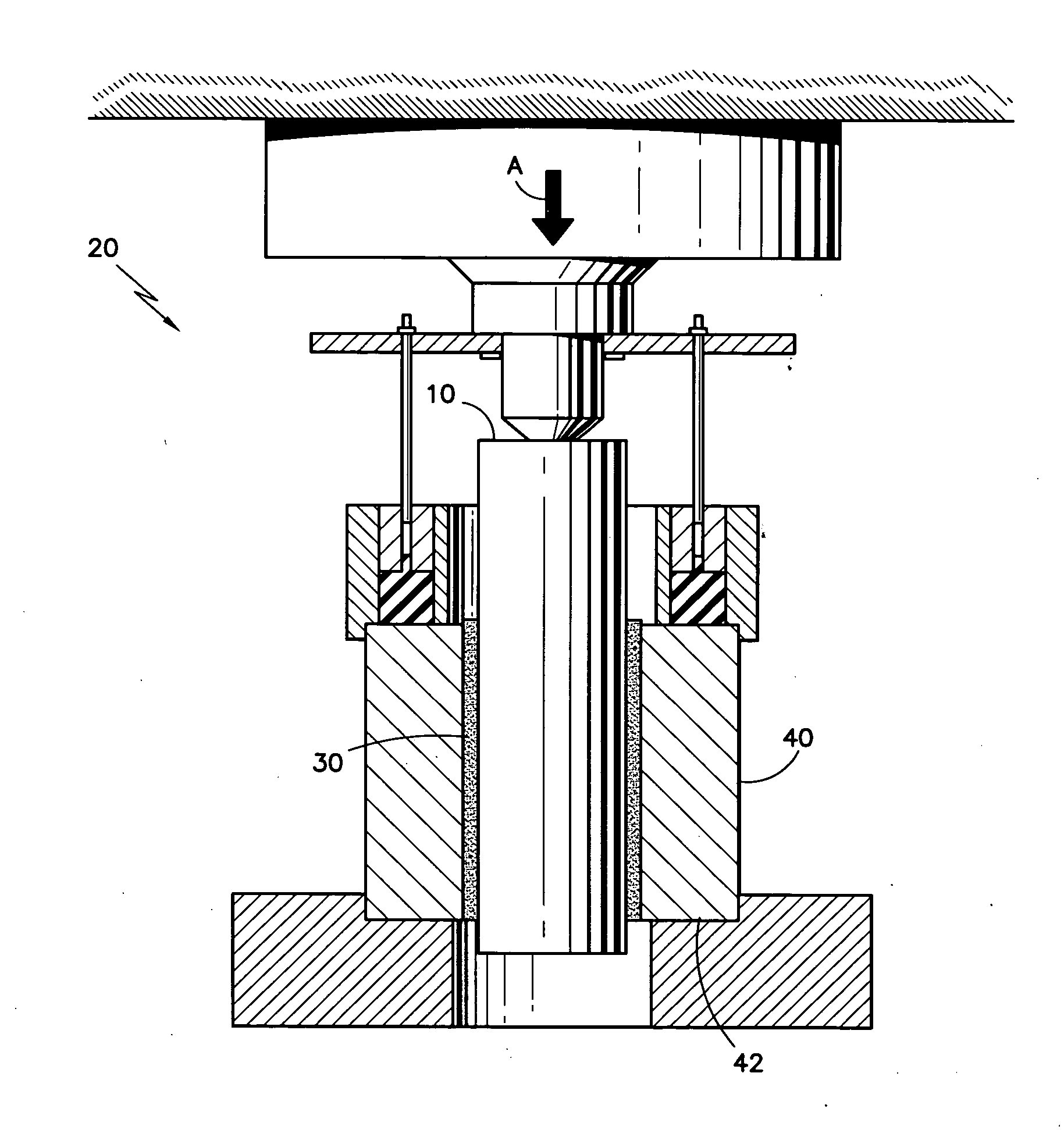Erosion resistant anti-icing coatings
a technology of anti-icing coatings and anti-ice, applied in the field of coatings, can solve the problems of affecting the aerodynamic performance of airfoils such as wings, fan blades, unanticipated loads on components, and ice build-up on aircraft and gas turbine engine structures, and achieve the effect of preventing ice build-up
- Summary
- Abstract
- Description
- Claims
- Application Information
AI Technical Summary
Benefits of technology
Problems solved by technology
Method used
Image
Examples
examples
[0021] Various icephobic coatings of this invention were prepared and tested for their respective ice adhesion strengths by coating various aluminum pins with a layer of an exemplary icephobic coating. Each coated pin 10 was positioned in a zero degree cone test apparatus 20 as shown in the FIGURE, where a layer of ice 30 about 10 ±2 mil thick was then grown on each coated pin 10 in the annular gap between the coated pin 10 and the mold 40. The ice 30 was grown by holding the apparatus 20 at a temperature of about −10±10° F. for about 6±+hours. Thereafter, the ice adhesion strength on each coated pin 10 was determined quantitatively via a pin shear test. The pin shear test involved constraining the mold at its base 42 while the pin was loaded axially in the direction of arrow A. This put the ice 30 into shear, and allowed the load at which the ice de-bonded from each coated pin 10 to be determined.
[0022] Various fluorocarbon elastomeric coatings were evaluated. The base fluorocarbo...
PUM
| Property | Measurement | Unit |
|---|---|---|
| molecular weight | aaaaa | aaaaa |
| weight percent | aaaaa | aaaaa |
| temperatures | aaaaa | aaaaa |
Abstract
Description
Claims
Application Information
 Login to View More
Login to View More - R&D
- Intellectual Property
- Life Sciences
- Materials
- Tech Scout
- Unparalleled Data Quality
- Higher Quality Content
- 60% Fewer Hallucinations
Browse by: Latest US Patents, China's latest patents, Technical Efficacy Thesaurus, Application Domain, Technology Topic, Popular Technical Reports.
© 2025 PatSnap. All rights reserved.Legal|Privacy policy|Modern Slavery Act Transparency Statement|Sitemap|About US| Contact US: help@patsnap.com

